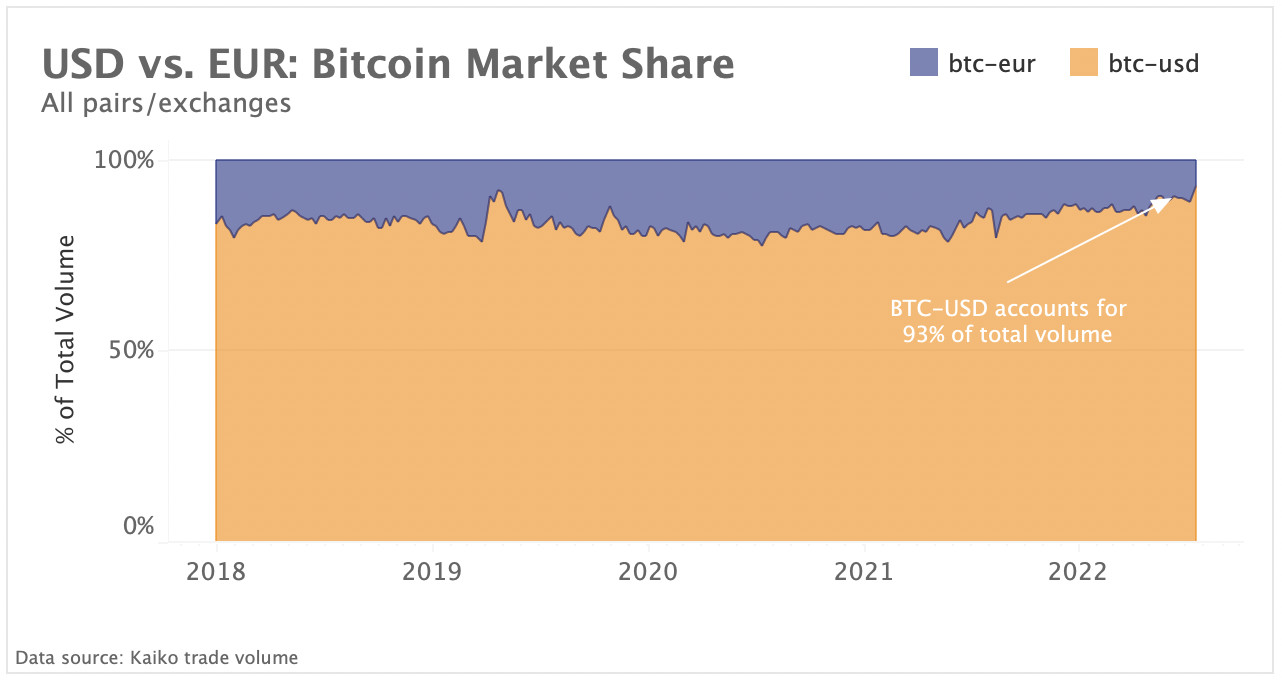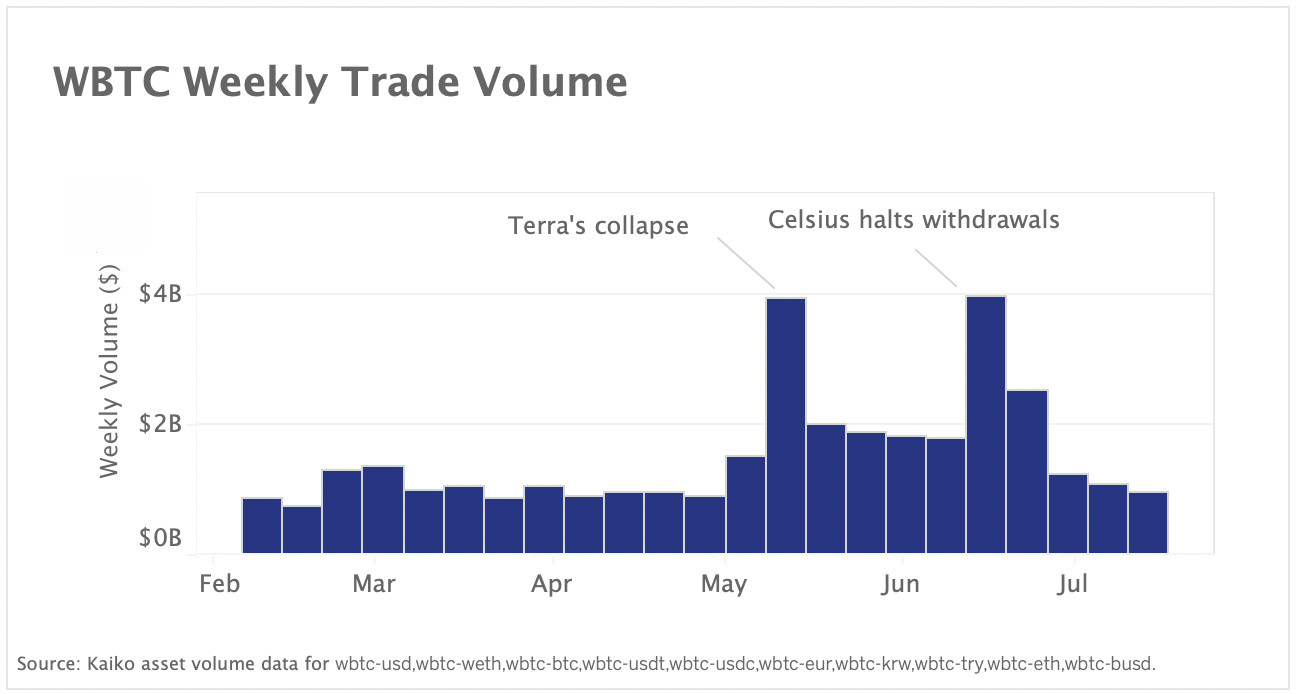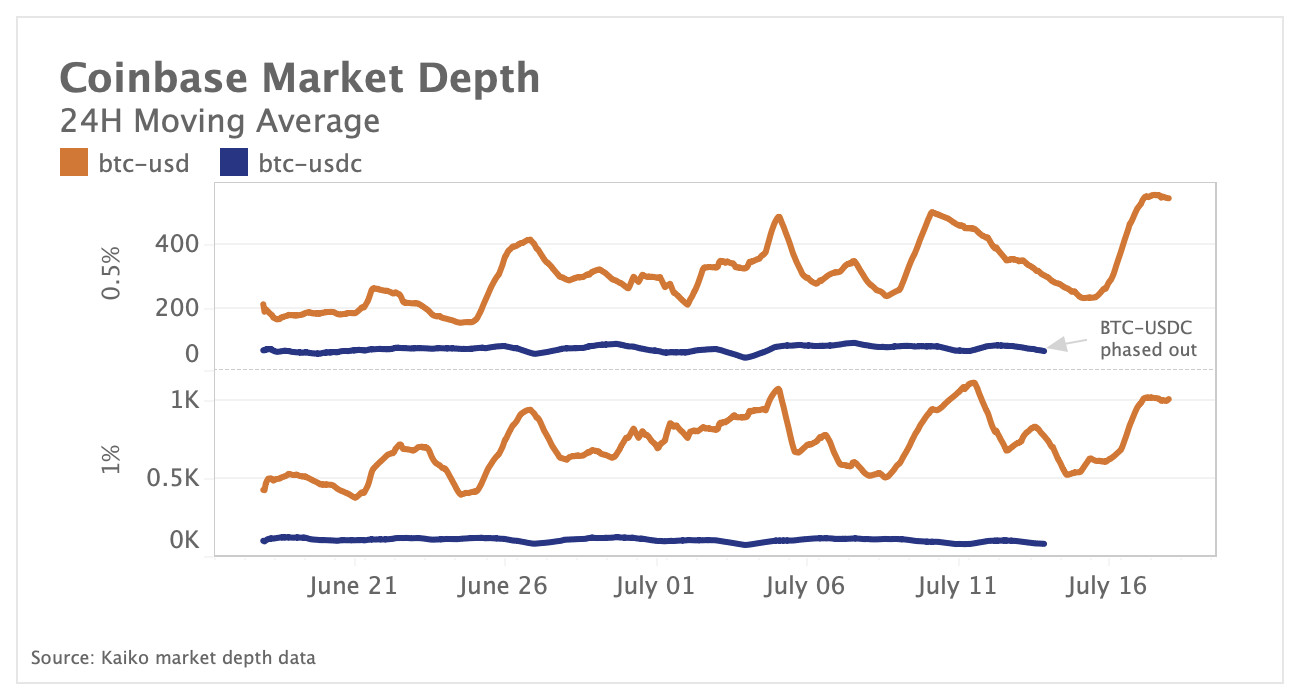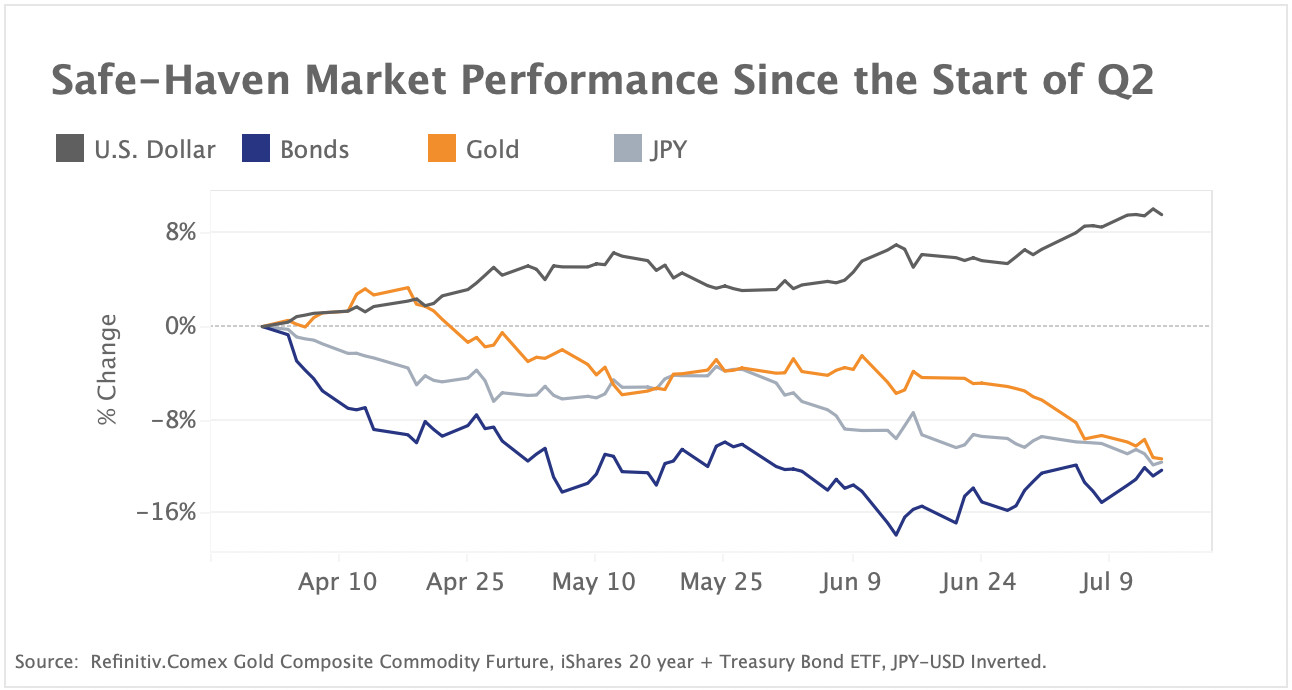A summarizing review of what has been happening at the crypto markets of the past week. A look at trending sectors, liquidity, volatility, spreads and more. The weekly report in cooperation with market data provider Kaiko.
The last 7 days in cryptocurrency markets:
- Price Movements: BTC staged a strong comeback early Monday morning, trading above $22k for the first time in 10 days. ETH is up 30% over the last week.
- Order Book Liquidity: BTC-EUR trade volume fell relative to BTC-USD as the Euro reached parity with the Dollar.
- Derivatives: BTC open interest climbed and funding rates flipped positive as market sentiment improved.
- Macro Trends: U.S. consumer inflation accelerated to 9.1% in June, a new four-decade high.
Crypto markets stage soft recovery despite inflation news
Crypto winter took a momentary pause over the weekend after markets staged a respectable relief rally. Ethereum (ETH) significantly outperformed Bitcoin (BTC) after news broke that the network's merge to proof-of-stake was projected for September 19th, which investors interpreted as a bullish signal. Meanwhile, the Celsius saga took a new turn after the beleaguered lender finally filed for bankruptcy, revealing more than 100,000 creditors and that the company is owed more than $439 million from a private lending platform. Finally, Uniswap lost over $8 million worth of ETH in a phishing attack and the Euro hit 1:1 parity with the US dollar for the first time in 20 years.
Axie Infinity's AXS token is worst performer

Metaverse and play-to-earn projects have been one of the hardest hit sectors in crypto over the last couple of months. Play-to-earn games leverage in-game tokens that are often given as rewards, such as Decentraland’s MANA, Axie Infinity’s SLP and AXS tokens, and the Sandbox’s SAND. The destruction in value of these rewards over the last couple of months has far reaching consequences for in-game economies, which in turn affect real world players.
AXS is the worst performer, down more than 34% since June 1st following a devastating $600m hack of the game’s network in April. SAND, MANA, ENJ, and APE are also each down double digits, although BTC remains a worse performer. Axie’s largest user base is in the Philippines, with weekly users at one point peaking above 2.7 million, although this number has since plummeted to a few hundred thousand. The sharp drop in value highlights the struggle that play-to-earn games have in retaining users during a market downturn.
BTC-USD volumes gain market share as Euro sinks
The share of euro-denominated bitcoin trade volume has declined to its lowest level since 2016 as the EUR/USD hit parity last week for the first time in two decades. Despite the Dollar remaining the preferred quote asset for fiat-to-crypto trading, BTC-EUR has maintained a stable share of around 20% over the past five years. However, this appears to have changed after the May 2021 market crash with BTC-EUR market share steadily declining to just 7%. The trend suggests investors increasingly prefer to trade in Dollars amid growing risk aversion and FX volatility.
wBTC volumes broke all time highs in June
Weekly trade volume of wrapped bitcoin (wBTC) on centralized exchanges hit an all-time high of $4bn after crypto lender Celsius halted withdrawals in early June. wBTC is an ERC-20 token that represents one bitcoin on the Ethereum blockchain, enabling BTC holders to participate in popular DeFi applications. Celsius in particular benefitted from yields that could be earned by depositing wBTC into DeFi lending protocols, which is why wBTC volumes are relevant to pay attention to right now. Celsius recently paid off its debts to the largest DeFi lenders - Aave, Maker, and Compound - which has released over $1bn of collateral, mainly in wBTC and stETH. The problem is that wBTC is not a very liquid market (much like stETH), meaning Celsius could have a difficult time exchanging their wBTC holdings for BTC without experiencing high slippage. Metrics such as market depth suggest that wBTC markets on centralized exchanges are highly illiquid.
wBTC holders likely anticipated the coming liquidity problems back in June after Celsius’ crypto holdings became highly scrutinized, causing a spike in volumes on centralized exchanges. wBTC trade volumes have reset to their levels from earlier this year, which suggests Celsius has not yet liquidated their holdings.
Coinbase merges BTC-USD and BTC-USDC order book
Coinbase officially mothballed its BTC-USDC pair on July 13. The pair had significantly less liquidity than the BTC-USD pair, with just 63 BTC compared to 300 BTC within 0.5% of the mid price at the time of its discontinuation; within 1% of the mid price the figure was 80 BTC and 800 BTC, respectively. It is unclear whether Coinbase has merged the two order books yet, as market depth for the BTC-USD pair has trended upwards but has not broken above its normal range. Even if all liquidity from the BTC-USDC pair was moved to the BTC-USD pair, it would have a relatively small effect on market depth.
US inflation beats estimates, boosting rate hike bets
The US Dollar continued strengthening against its peers last week with the EUR/USD hitting parity for the first time in two decades. The Dollar index (DXY) which measures the performance of the greenback against its peers is up more than 12% so far this year while most other safe-haven assets are down double-digits. The greenback has managed to attract safe-haven flows due to a combination of aggressive Fed tightening and its status as a reserve currency. Meanwhile, bonds and gold have trended downwards since the start of April.
The Dollar continued its record rally right as the U.S. consumer price inflation numbers revealed an acceleration to 9.1%, beating economist’s expectations and triggering a sharp repricing in Fed rates expectations. The Fed's move will be closely watched by other major central banks, which have already sped up rate hikes as well (charted below).
Odds for a supersized 100bps hike at the July FOMC meeting spiked to 86%, up from just 7% before the inflation print. In the US, the Fed has already sped up the pace of monetary policy tightening rising rates by 75bps last month, instead of the initially planned 50bps move. This has put pressure on other central banks to follow suit, with the Bank of Canada hiking rates by 100bps last week.









